Since January is #NationalTrainYourDogMonth, we went on Facebook and asked our readers what one question they wished a dog trainer would answer. The response was incredible! We received lots of great questions. Many of you had the same concerns, which can sometimes help – just to know someone else is in your boat, so to speak. We went through the questions and rounded up the “most asked” to answer here. And remember no dog is too old to learn something new or change their behavior – old dogs can learn new tricks! (Note: these are just suggestions. All of these are pretty big issues that need a lot of work and not every technique works with every dog. You will always have better luck if you work with a local positive reinforcement dog trainer who can modify techniques to fit your particular dog’s personality and needs).
RELATED: Best Online Dog Trining Classes Reviewed
#1 – How do I get my dog to stop barking at visitors?
Many of you asked about barking dogs – in fact this was definitely the “most asked” question. Dogs bark for many different reasons when people come over. It can be excitement, anxiety, fear, aggression – or even a combination of these (depending on who is visiting!). The best way to get your dog over this is through conditioning – you are going to teach your dog that when he hears people approaching, he needs to stay calm. This can be achieved best if you give your dog a task, such as go lay on the mat when the doorbell rings.
To start, you will need to practice at the door when there are no visitors – so nothing to set your dog off. Reward him for being calm. If he barks, just ignore it and wait for him to get quiet again. Slowly build up to ringing the door bell, knocking softly on the door, etc. You are conditioning your dog that these noises mean rewards for calmness. Then, invite calm visitors over as your dog gets better at being quiet by the door.
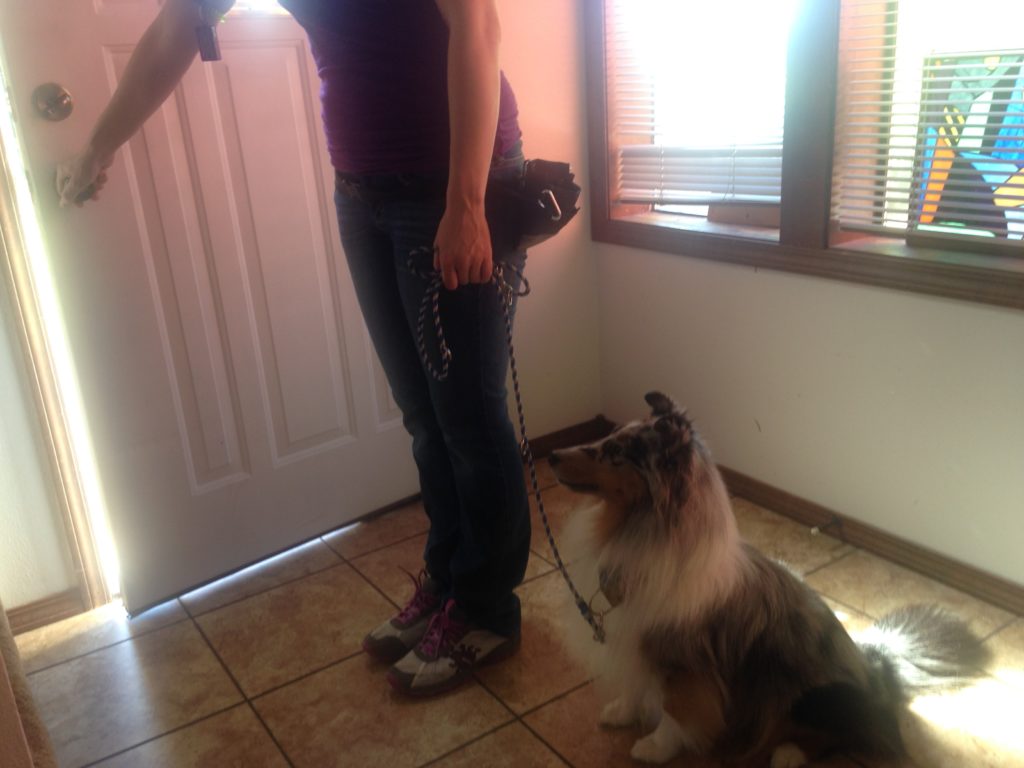
Many dogs will bark even after the visitors have been there for some time or when they are leaving. Your dog is just letting you know how he feels – excited, stressed, etc. You need do the same conditioning for these scenarios as well. It will take time and everyone in the house (including visitors) needs to be on board with this. But it does work if you take the time. For truly aggressive dogs, you should work with a positive reinforcement dog trainer who specializes in behavior modification. Of course, a trainer can help you regardless of why your dog is barking at visitors and you will see results quicker.
RELATED: 7 Best Online Dog Training Courses
#2 – How do I get my dog to stop being reactive on leash?
This was another one of the most asked questions. Like the barking question above, dogs react on leash for a variety of reasons. The main thing owners need to realize is not all dogs want to be greeted by other people or dogs. This means the focus of your training should be on getting your dog to be calm and focused on you during walks – not making your dog greet when he doesn’t want to.

A good method for this is similar to how we handled barking at visitors. You are going to start at a distance from a person or dog that your dog does not react. For some this maybe a few feet, for others it may be a city block. (This is where working with a trainer can help, as they can bring in a “neutral” dog to use as the distraction). Reward your dog for looking at the other dog (or person) but without barking. If your dog won’t take the food, you are still too close for his comfort, move away. Soon, your dog will start looking at a dog or person and then looking at you, anticipating a treat (think Pavlov’s Dogs). You will know reward your dog for looking at the dog and then focusing (looking at) you.
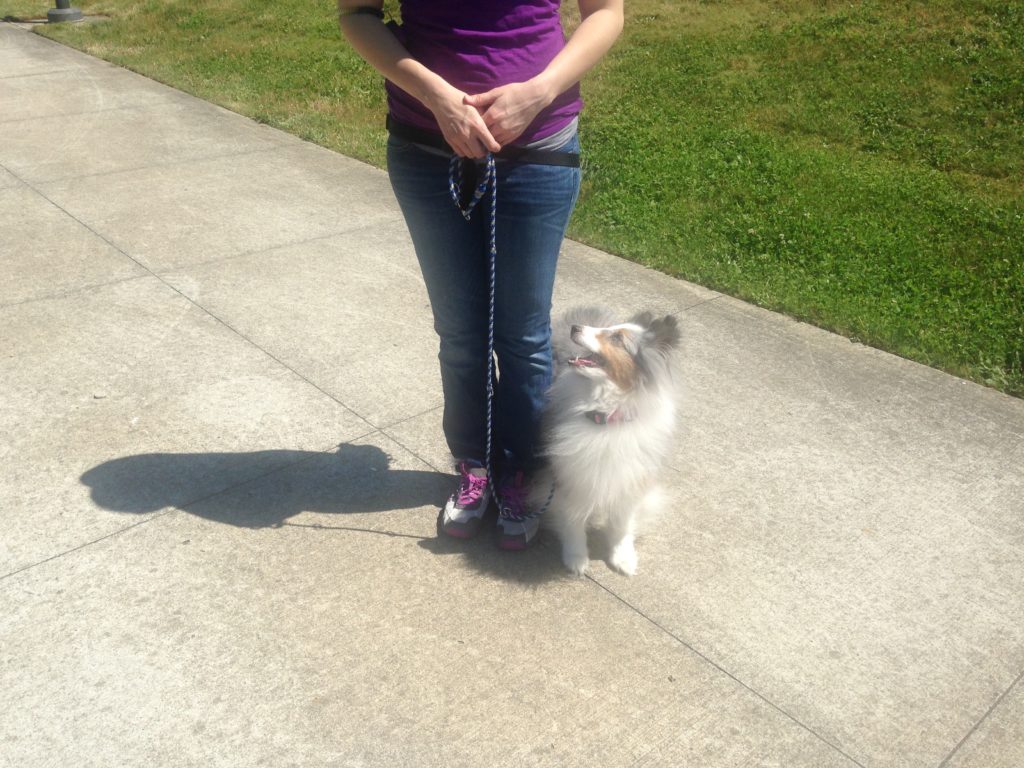
Again, this is a slow processes but it does work. You cannot remove your dog’s reactivity, it is part of his temperament, but you can teach him how to cope with it. Again, if you have a truly aggressive dog, please seek professional help.
#3 – How do I potty train this dog!?
Potty training is probably the only real downsized to dog ownership and some dogs, in particular little dogs, are not easy. The best tips are:
Establish a schedule. Feed your dog at the same time each day. Take your dog or puppy out at the same time every day. This gets them on a schedule and helps prevent accidents
Keep them confined. Have your dog either tethered to you, in an enclosed space such as an x-pen or in a crate. This allows you to keep an eye on them so they don’t have accidents. This is what I did when I was potty training and it took a week. After they went outside, they got some freedom time to run around the house (reward!). If I took them out and they didn’t go potty, they stayed with me on the leash, or in their pen. I would wait a few minutes, and then take them out again.
#4 – How do I stop my dog from pulling on the leash?
Luckily, regardless of how old your dog is, you can teach them to walk nicely on lead. It may take longer with an older dog, but it’s definitely possible so don’t let that stop you.
There are two parts to this: management and training. The management part is twofold: you need a way to control your dog while he is learning to walk nicely, because it won’t happen overnight. And sometimes, you need to walk your dog for potty or exercise and don’t have time to train. In these cases, using something like a dog halter or a front-clip harness can help your dog not pull as much while he is learning.

For training, work at home first with no distractions (as most dogs are pulling their owner towards something while walking). Stand with your dog in heel position (whatever side you wish) and reward him for being in that position. Take a step, reward him for staying in that position. Repeat this, gradually adding steps in-between rewards. Yes, it’s a slow process, but it’s worth it.
There are many other techniques such as backwards walking and chair heeling that can help teach your dog to walk nicely. Also, having a solid “leave it” cue can help get your dog’s attention back to you when he is trying to drag you somewhere.
If you let him drag you somewhere, then he is getting rewarded for pulling by getting to sniff that tree, greet that person, etc. When your dog starts pulling, calmly take steps backward (do not jerk on the leash), in the opposite direction your dog is going. When he turns around and comes back to your side, proceed forward. This teaches your dog that he is not going to get what he wants by pulling, but by staying by your side. You can then use a release word, such as “go sniff” when you are releasing him from your side to go potty.
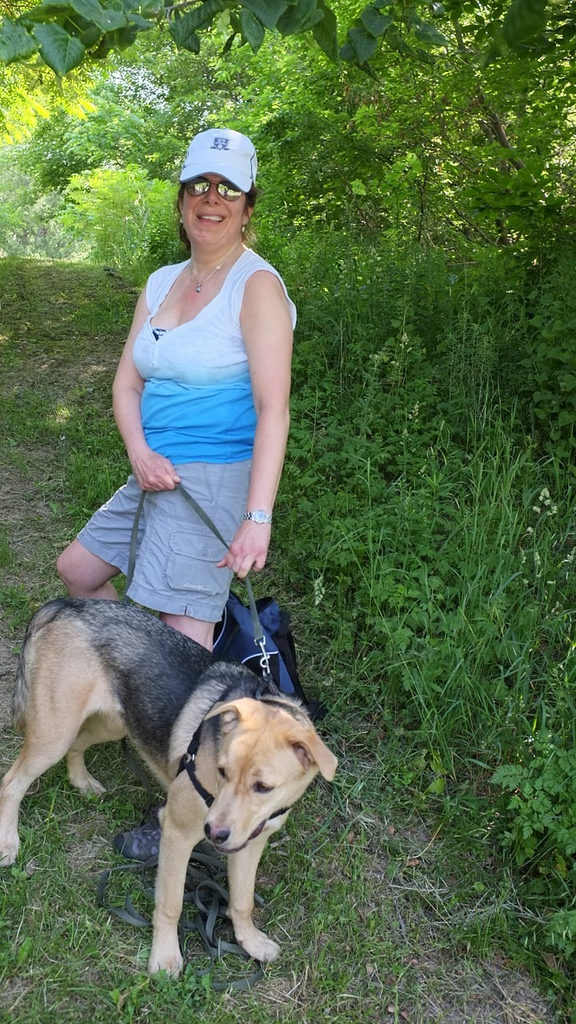
#5 – How do I stop my puppy from biting?
This was another frequently asked question. Puppies naturally explore their world with their mouths and they use them to communicate with their mom and littermates, so it only makes sense that they do it with us. To get a puppy to stop biting you just have to teach him that we don’t communicate that way.
For starters, most puppies bite during play, so make sure you are playing appropriately to help him learn the rules. Don’t use your hand as a toy. Don’t rough house with your puppy, rubbing his belly roughly or rolling him over with your hands. For most young dogs, these actions will cause a bite, as he tries to play with you. Instead, play with a toy. Gently touch your puppy in ways that do not solicit that bite response.
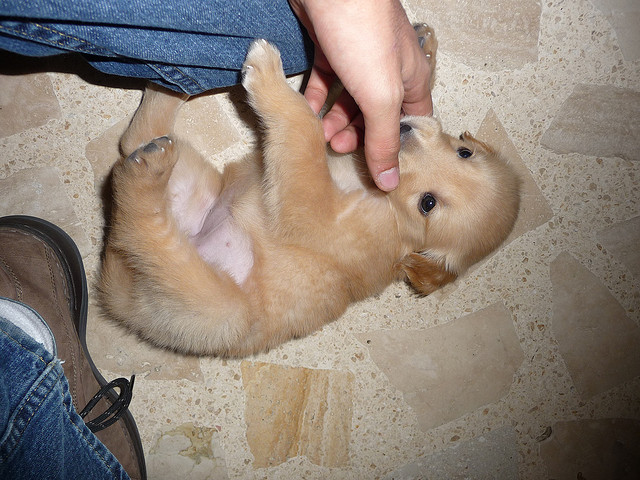
If your puppy does bite, immediately stop play or petting and walk away. This teaches him that biting stops the game. He will quickly learn to not bite. This works best if you use a “tie-down” – attach a leash or rope to your puppies harness and have that attached to something he can’t move, so he can’t follow you when you leave. Wait for him to calm down, then return.
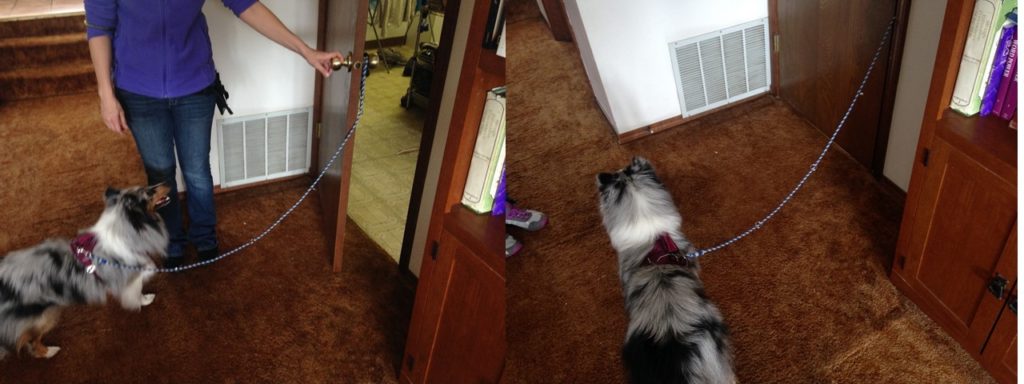
If your puppy or dog has sensitive areas that you need him to be okay with touching, such as paws, work on desensitizing him to touch by slowly approaching him with your hand and then rewarding him with a treat for no reaction. My youngest sheltie screamed when you touched him as a puppy. You couldn’t hold him or do a nail trim, and forget about a belly rub or drying off with a towel. Using this technique he now offers his paws for drying off, does nail trims without a fuss, and rolls over to solicit belly rubs – so it does work!
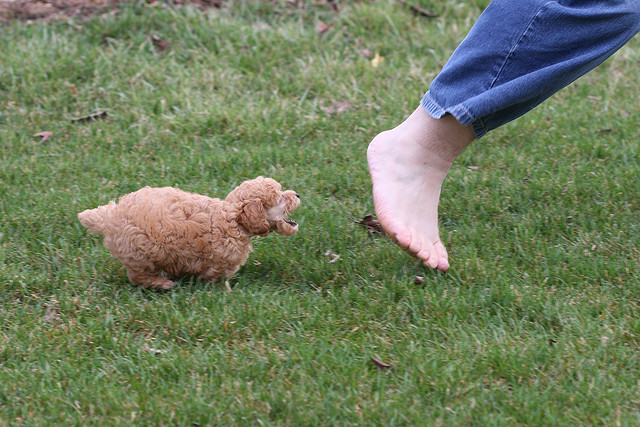
Heel nipping. Since I own herding breeds, I am all too familiar with this. Puppies see your feet moving they just can’t help themselves. As soon as your puppy starts to chase you. Stop. No matter what they do, don’t move. It’s best to do this training with an adult, to your children. Having your puppy on a harness with a leash dragging is helpful because you can pick up the leash and use it to get your puppy away from your feet. As soon as he is calm, play can resume. Your pup will learn that if he wants to run and play with you, those feet are off limits.
 Toledo, United States.
Toledo, United States.